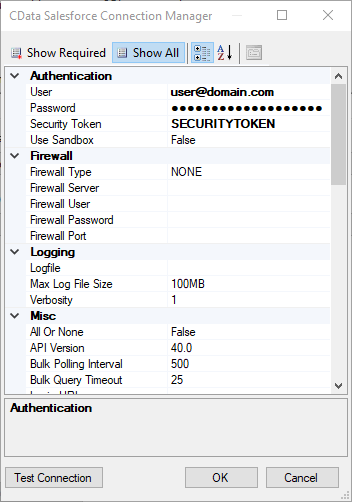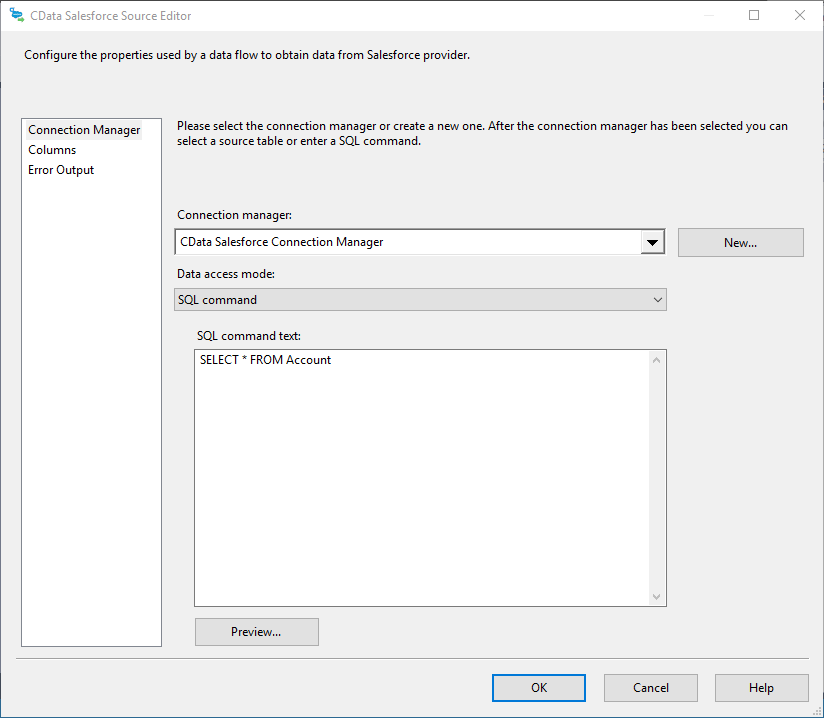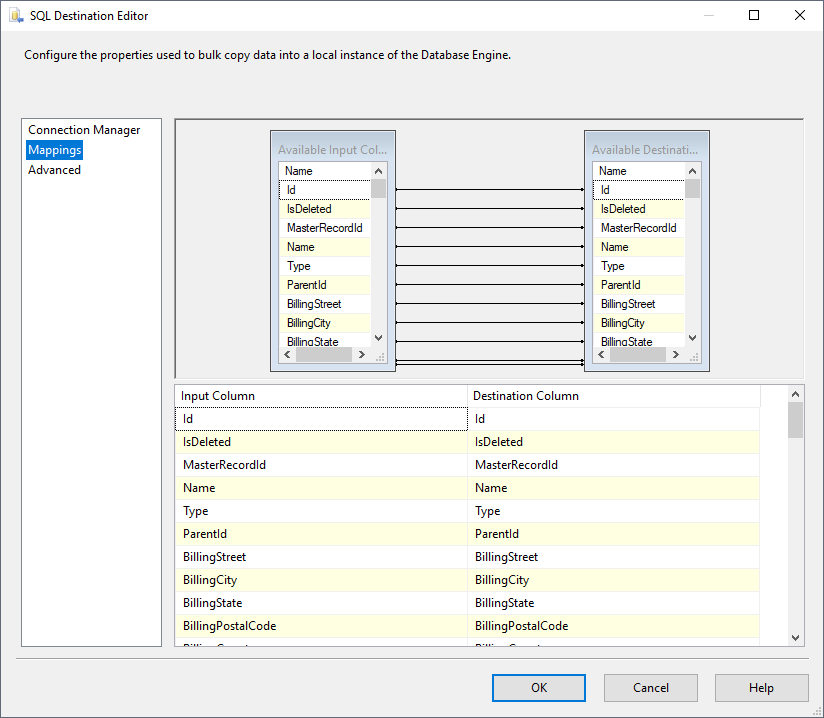Discover how a bimodal integration strategy can address the major data management challenges facing your organization today.
Get the Report →How to Import Google Cloud Storage Data into SQL Server using SSIS
Easily back up Google Cloud Storage data to SQL Server using the SSIS components for Google Cloud Storage.
Using SQL Server as a backup for critical business data provides an essential safety net against loss. Backing up data to SQL Server enables business users to more easily connect that data with features like reporting, analytics, and more.
This example demonstrates how to use the CData SSIS Tasks for Google Cloud Storage inside of a SQL Server SSIS workflow to transfer Google Cloud Storage data into a Microsoft SQL Server database.
Add the Components
To get started, add a new Google Cloud Storage source and SQL Server ADO.NET destination to a new data flow task.

Create a New Connection Manager
Follow the steps below to save Google Cloud Storage connection properties in a connection manager.
- In the Connection Manager window, right-click and then click New Connection. The Add SSIS Connection Manager dialog is displayed.
- In the Connection Manager type menu, select GoogleCloudStorage. The CData Google Cloud Storage Connection Manager is displayed.
- Configure connection properties.
Authenticate with a User Account
You can connect without setting any connection properties for your user credentials. After setting InitiateOAuth to GETANDREFRESH, you are ready to connect.
When you connect, the Google Cloud Storage OAuth endpoint opens in your default browser. Log in and grant permissions, then the OAuth process completes
Authenticate with a Service Account
Service accounts have silent authentication, without user authentication in the browser. You can also use a service account to delegate enterprise-wide access scopes.
You need to create an OAuth application in this flow. See the Help documentation for more information. After setting the following connection properties, you are ready to connect:
- InitiateOAuth: Set this to GETANDREFRESH.
- OAuthJWTCertType: Set this to "PFXFILE".
- OAuthJWTCert: Set this to the path to the .p12 file you generated.
- OAuthJWTCertPassword: Set this to the password of the .p12 file.
- OAuthJWTCertSubject: Set this to "*" to pick the first certificate in the certificate store.
- OAuthJWTIssuer: In the service accounts section, click Manage Service Accounts and set this field to the email address displayed in the service account Id field.
- OAuthJWTSubject: Set this to your enterprise Id if your subject type is set to "enterprise" or your app user Id if your subject type is set to "user".
- ProjectId: Set this to the Id of the project you want to connect to.
The OAuth flow for a service account then completes.
![Configuring a connection (Salesforce is shown).]()
Configure the Google Cloud Storage Source
Follow the steps below to specify the query to be used to extract Google Cloud Storage data.
- Double-click the Google Cloud Storage source to open the source component editor.
- In the Connection Manager menu, select the connection manager previously created.
- Specify the query to use for the data extraction. For example:
SELECT Name, OwnerId FROM Buckets WHERE Name = 'TestBucket'![The SQL query to retrieve records. (Salesforce is shown.)]()
- Close the Google Cloud Storage Source control and connect it to the ADO.NET Destination.
Configure the SQL Server Destination
Follow the steps below to specify the SQL server table to load the Google Cloud Storage data into.
- Open the ADO.NET Destination and add a New Connection. Enter your server and database information here.
- In the Data access mode menu, select "table or view".
- In the Table Or View menu, select the table or view to populate.
- Configure any properties you wish to on the Mappings screen.
![The mappings from the SSIS source component to SQL Server. (Salesforce is shown.)]()
Run the Project
You can now run the project. After the SSIS Task has finished executing, your database will be populated with Google Cloud Storage data.










